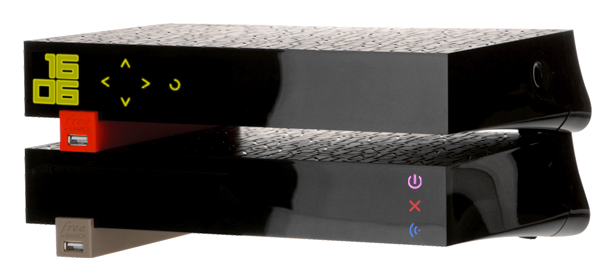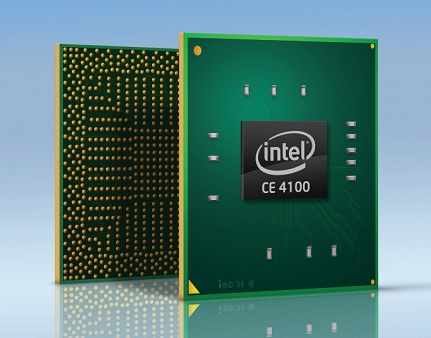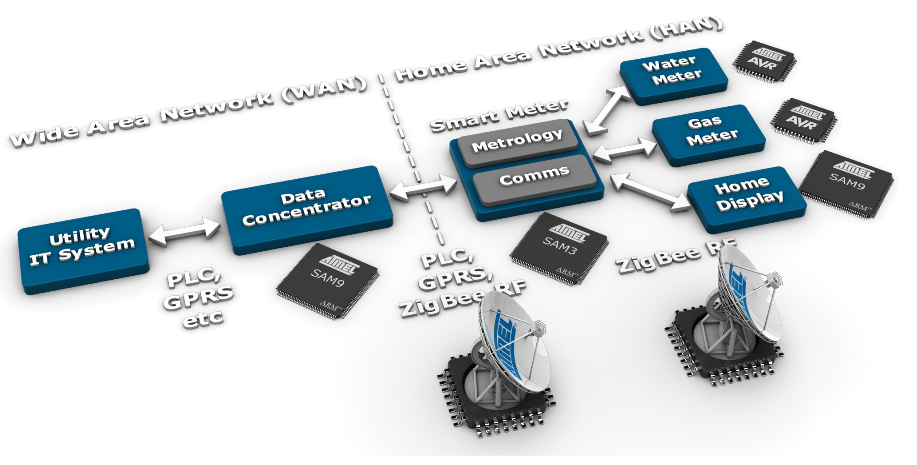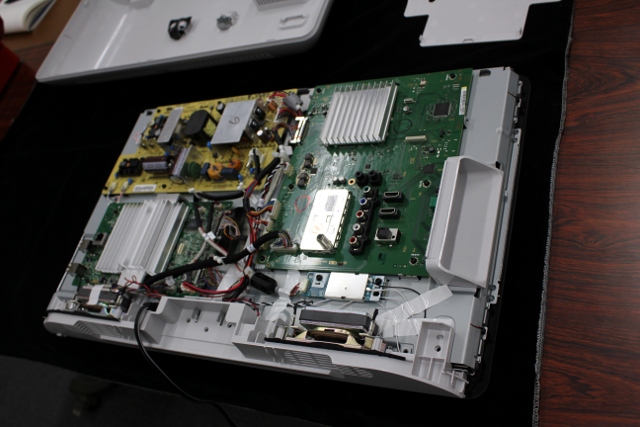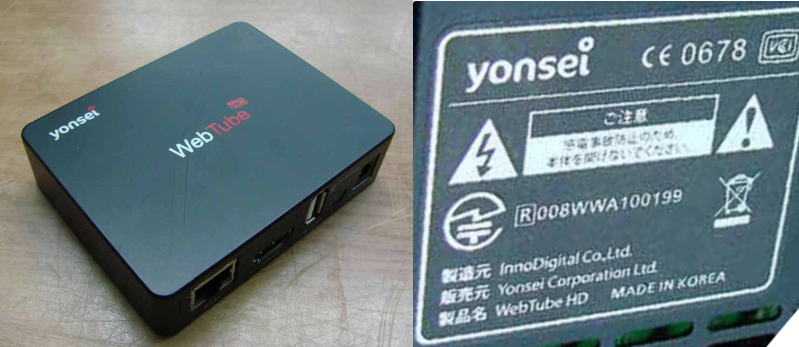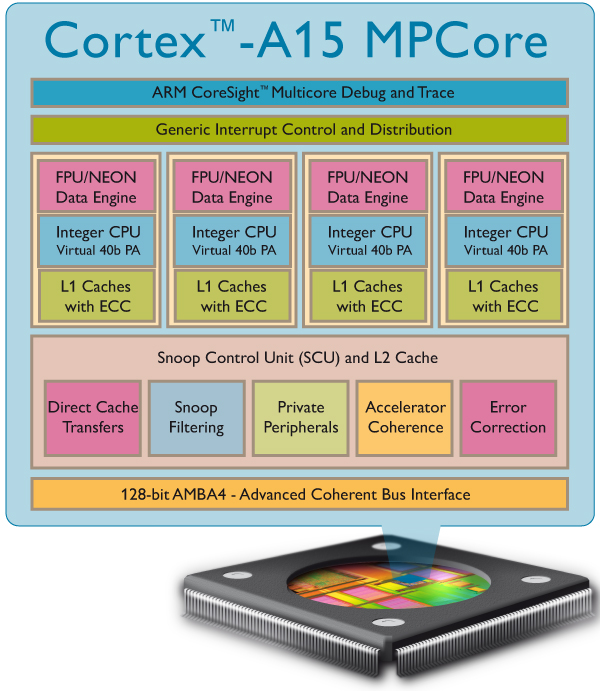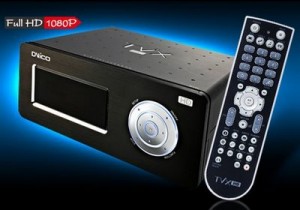Free (Iliad) has just announced the Freedom v6 Révolution on the 14th of December 2010. This solution that offers 28 Mbps internet access, digital television (IPTV/DVB), telephony (DECT, VoIP, Mobile…), Network Access Storage (NAS) and Gaming is actually based on two boxes designed by Philippe Starck: Freebox server: Handles networking (ADSL 2+ /wifi), NAS, telephony… Freebox player: Handles multimedia functions with the blu-ray player, digital television support… Free also released the technical specifications for both devices: Technical Specification of Freebox Server ADSL / ADSL2+ ANSI T1 413 / ITU G.992.1, G.992.3, G.992.5 Annex A 4 Ethernet ports 10 / 100 / 1000 Base-T SFP Port 2 USB 2.0 Ports e-SATA Port Stereo audio input/output with integrated speakers FXS Port (Telephony) WiFi 802.11b/g/n 3×3 450 Mbps 2.4 Ghz Base Station DECT CAT I/Q Internal 250 GB Hard Disk ARM9 Processor @ 1.2GHz with 512 MB RAM Noise < 37dB (while HDD […]
What is Augmented Reality ? How to develop Augmented Reality applications ?
Now, we start to hear many smartphones or tablet pc feature Augmented Reality (AR). But what is it exactly? Are there any applications right now? How to development application making use of Augmented Reality? Augmented Reality Definition Ronald Azuma’s definition says that Augmented Reality: combines real and virtual is interactive in real time is registered in 3D Augmented Reality Applications Augmented Reality usually involves a real-life background capture (image or video) which is then going through image recognition and finally, some data is overlaid on top of this background. Here are some of applications that are available today (commercially or experimentally): PSV Eindoven has created an application to track offside at football matches. Augmented Reality Business cards can be scanned, recognized and a video presentation of the person and/or the company on the business card can be played back. Augmented Reality can help you find your way (and your holes) […]
Resources for Intel Atom CE41xx: CE4100, CE4130, CE4150
Intel Atom CE4100 (Codename: Sodaville) is a System-on-Chip (SoC) media processor designed for use in set-top boxes, media player and internet TVs such as D-Link Boxee Box and Sony NSX-24GT1 Google TV. The Atom CE4100 is a 45nm-manufactured SoC running at 1.2 GHz. The Atom CE4100 supports hardware decode of up to two 1080p video streams (H.264, VC-1, MPEG-4/Divx..) and advanced 3-D graphics. It is also able to handle Adobe Flash 10 and 3D gaming as well. For further details about the processor, please refer to Intel Atom CE4100 Product Brief. [ad#Google Adsense – Wide Banner] The Atom CE4100 custom linux kernel and SDK are not publicly available, and you’ll need to contact an Intel FAE if you want to develop on the platform. However, some development tools for Atom (i.e The Intel(R) Embedded Software Development Tool Suite for Intel(R) Atom(TM) Processor) including a C++ compiler (GCC compatible), performance primitives […]
In-Home Displays for Smart Grid – Atmel – Mentor Embedded
I’ve just attended a webinar organized by Mentor Graphics entitled “In-Home Displays: Enabling Smart Grid into every home” with Atmel and Mentor Embedded. This webinar is now available on-demand at http://go.mentor.com/hAz8 This webinar is divided into 2 parts: Frederic Gaillard – Product Marketing Manager at ATMEL – gave an overview of Smart Grid and its different components and presented Atmel Solutions: MCU/MPU, wireless chips (Zigbee/Wi-Fi) and touch screen chipset. Gordon Cameron – Business Development Manager at Mentor Embedded – focused on the difficulties in developing a user interface for In-Home Displays within a short time frame and how Mentor Embedded UI design solution Inflexion could help greatly reduce the development schedule. There was no external files for this webinar, so I created 2 PDF with the most relevant slides for your reference: Atmel Smart Grid and In-Home Displays Mentor Embedded In-Home Displays UI Development Tools Frederic Gaillard shortly explained the […]
Sony NSX-24GT1 Google TV Tear Down
Nikkei Electronics has recently teared down Sony Google TV as seen at IFA 2010. They used Sony NSX-24GT1, a 24″ internet HD television powered by Google TV, for this little exercise. They found three boards: Power supply board at the upper left. Main board (“Android board”) at the lower left. TV board at the right. The SoC mounted on the TV board is Renesas Electronics Corp. EMMA3TL2 (MC-10157), an image processing SoC designed for digital TVs supporting ATSC (USA), DVB (Europe) and ARIB (Japan). Finally, they disassembled the TV to access the main board. It turned out that Sony NSX-24GT1 Google TV main board is based on Intel Atom CE4100 (center) and Foxconn is the manufacturer (lower right). Eight Samsung K4B1G0846F DRAM modules are mounted on the board (Right of Atom CE4100) and since each of the DRAM has a capacity of 128 Megabytes, the total memory capacity is 1 […]
Webtube HD Casing, Hardware and FCC Approval
WebTube HD – one of the first Android set-top box – now commercialized in Germany, Austria and Switzerland (Retail price: 249 Euros), just passed FCC approval. The interesting part of the FCC Approval is that we do get the external and internal pictures, so we can get a better look at the hardware. First let’s have a look at Webtube HD Casing. As we already knew, this media player is designed and manufactured by InnoDigital Co. Ltd. The news is that it will be distributed by Yonsei Corporation Ltd, a rather recent Japanese Company apparently only setup to promote Webtube HD. (Japanese name: ブラウザBOX) See Webtube HD internal pictures for FCC approval below. We already knows the following HW specs from Webtube HD website: OS : Android Memory : 512 Mbyte DDR / 2 Gbyte Flash Memory USB(option) : 1 port (for option) Audio : MPEG-1 layers 1,2 and 3(MP3) […]
ARM’s Next Generation Processor: Cortex A15 with Mali T-604
This year and next, many products will use processors based on ARM core cortex A8 and A9 tied-up with Mali 400 GPU. Those processors will run between 1 and 2 GHz. Earlier this month, ARM announced their new GPU Mali-T604 that will be used with Cortex A15 @ 1 to 2.5 GHz depending on the target application. The core design is ready, silicon foundries should be able to manufacture chips by the end of 2011 and products should be available for retail end of 2012 / beginning of 2013. ARM and their customer target the following applications for Cortex A15: Advanced Smartphones (1 to 1.5 GHz single or dual-core configurations) Mobile Computing (1 to 1.5 GHz single or dual-core configurations) High-end Digital Home Entertainment (1 to 2 GHz dual-core or quad-core configurations) Wireless Infrastructure (1.5 to 2.5 GHz quad-core, octo-core or larger configurations) Low-power Servers (1.5 to 2.5 GHz quad-core […]
SMP8656 Android STB Divco Tvix Xroid A1
[ad#Google Adsense – Wide Banner] At last, it seems an Android set-top box based on Sigma Designs SMP865x is going to hit the market soon, most probably Q1 2011. Divco – a Korean company – will bring Tvix Xroid A1 to market. Here are some extracts of the press release: Sigma Designs (Nasdaq: SIGM), a leading provider of system-on-chip(SoC) solutions used to deliver entertainment and control throughout the home, today announced its SMP8656 Secure Media Processor™ will enable the new Android-based Over the Top (OTT) media player by Dvico. The TVIX Xroid A1 is the first Android connected media player on the market to use Sigma’s cutting edge media processor to deliver premium quality video and music streaming services. …. Dvico’s upcoming “Android TVIX” supports all the multimedia functionalities of current TVIX, as well as native Web-browsing and downloading of Android applications. It will offer open API that can be […]


